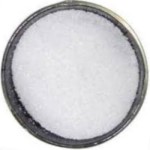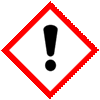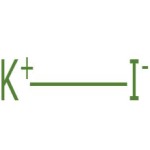CAS Number 7681-11-0, Potassium Iodide USP IP BP Ph Eur Analytical Reagent FCC Food Grade Manufacturers Exporters







CAS Number 7681-11-0, Potassium Iodide Manufacturer Exporter
For Properties Specifications of Potassium Iodide Click Properties, Specifications of Potassium Iodide Manufacturer.
For Uses of Potassium Iodide Click Uses of Potassium Iodide Manufacturer.
For For SDS MSDS Sheet of Potassium Iodide Click SDS Safety Data Sheet MSDS Sheet of Potassium Iodide Manufacturer.
The Properties and Specifications of Potassium Iodide:
Potassium Iodide USP Grade Specifications
KI -- 166.00
Potassium iodide -- CAS 7681-11-0
Potassium Iodide contains not less than 99.0 percent and not more than 101.5 percent of KI, calculated on the dried basis.
Identification: A solution of it meets the requirements of the tests for Potassium and for Iodide.
Alkalinity: Dissolve 1.0 g in 10 mL of water, and add 0.1 mL of 0.1 N sulfuric acid and 1 drop of PhPh TS: no color is produced.
Loss on drying: Dry it at 105C for 4 hours: it loses not more than 1.0% of its weight.
Iodate: Dissolve 1.1 g in sufficient ammonia- and carbon dioxide-free water to obtain 10 mL of solution, and transfer to a color-comparison tube. Add 1 mL of starch and 0.25 mL of 1.0 N sulfuric acid, mix, and compare the color with that of a control containing, in a similar volume, 100 mg of Potassium Iodide, 1 mL of standard iodate solution [prepare by diluting 1 mL of potassium iodate solution (1 in 2500) with water to 100 mL], 1 mL of starch TS, and 0.25 mL of 1.0 N sulfuric acid. Any color produced in the solution of the test specimen does not exceed that in the control: not more than 4 µg per g is found.
Limit of nitrate, nitrite, and ammonia: To a solution of 1 g in 5 mL of water contained in a test tube of about 40-mL capacity add 5 mL of 1 N sodium hydroxide and about 200 mg of aluminum wire. Insert a pledget of purified cotton in the upper portion of the test tube, and place a piece of moistened red litmus paper over the mouth of the tube. Heat the test tube and its contents in a steam bath for 15 minutes: no blue coloration of the paper is discernible.
Thiosulfate and barium: Dissolve 0.5 g in 10 mL of ammonia- and carbon dioxide-free water, and add 2 drops of 2 N sulfuric acid: no turbidity develops within 1 minute.
Heavy metals: Dissolve 2.0 g in 25 mL of water: the limit is 0.001%.
Potassium Iodide BP Ph Eur Grade Specifications
KI -- 166.0 -- CAS 7681-11-0
Content: 99.0 per cent to 100.5 per cent (dried substance).
CHARACTERS
Appearance: White or almost white powder or colourless crystals.
Solubility: Very soluble in water, freely soluble in glycerol, soluble in ethanol (96 per cent).
IDENTIFICATION
A. Solution S (see Tests) gives the reactions of iodides (2.3.1).
B. Solution S gives the reactions of potassium (2.3.1).
TESTS
Solution S: Dissolve 10.0 g in carbon dioxide-free water R prepared from distilled water R and dilute to 100 ml with the same solvent.
Appearance of solution: Solution S is clear and colourless.
Alkalinity: To 12.5 ml of solution S add 0.1 ml of bromothymol blue solution R1. Not more than 0.5 ml of 0.01 M hydrochloric acid is required to change the colour of the indicator.
Iodates: To 10 ml of solution S add 0.25 ml of iodide-free starch solution R and 0.2 ml of dilute sulphuric acid R and allow to stand protected from light for 2 min. No blue colour develops.
Sulphates: Maximum 150 ppm.
Dilute 10 ml of solution S to 15 ml with distilled water R.
Thiosulphates: To 10 ml of solution S add 0.1 ml of starch solution R and 0.1 ml of 0.005 M iodine. A blue colour is produced.
Iron: Maximum 20 ppm.
Dilute 5 ml of solution S to 10 ml with water R.
Heavy metals: Maximum 10 ppm.
12 ml of solution S complies with test A. Prepare the reference solution using lead standard solution (1 ppm Pb) R.
Loss on drying: Maximum 1.0 per cent, determined on 1.00 g of previously powdered substance by drying in an oven at 105C for 3 h.
Potassium Iodide IP Grade Specifications
KI -- Molecular Weight 166.00
Category: Antithyroid; antifungal; expectorant.
Description: Colourless crystals or white powder; odourless
Solubility: Very soluble in water; freely soluble in glycerin; soluble in ethanol (95%).
STANDARDS
Potassium Iodide contains not less than 99.0 per cent and not more than 100.5 per cent of KI, calculated with reference to the dried substance.
Identification: A 10% w/v solution in carbon dioxide-free water (solution A) gives the reactions of potassium salts and of iodides.
Alkalinity: To 10 ml of solution A add 0.2 ml of 0.01M sulphuric acid; no colour is produced on addition of a drop of PhPh solution. .
Clarity and colour of solution: Solution A is clear and colourless.
Arsenic: Dissolve 5.0 g in 50 ml of 'water and 12 ml of stannated hydrochloric acid AsT. The resulting solution complies with the limit test for arsenic (2 ppm).
Heavy metals: Not more than 10 ppm, determined on 2.0 g
Iron: Solution A complies with the limit lest for iron (20 ppm).
Barium: Dissolve 0.5 g in 10 ml of water and add 1 ml of dilute sulphuric acid; no turbidity develops within one minute.
Potassium Iodide FCC Food Grade Specifications
KI Formula weight 166.00
CAS 7681-11-0
DESCRIPTION
Potassium Iodide occurs as hexahedral crystals, either transparent and colorless or somewhat opaque and white, or as a white, granular powder. It is stable in dry air but slightly hygroscopic in moist air. One gram is soluble in 0.7 mL of water at 25C, in 0.5 mL of boiling water, in 2 mL of glycerin, and in 22 mL of alcohol.
REQUIREMENTS
Identification:
A. A 1:10 aqueous solution responds to the tests for Potassium and for Iodide.
B. The pH of a 1:20 aqueous solution is between 6 and 10.
Assay: Not less than 99.0% and not more than 101.5% of KI after drying.
Iodate: Not more than 4 mg/kg.
Lead: Not more than 4 mg/kg.
Loss on Drying: Not more than 1%.
Nitrate, Nitrite, and Ammonia: Passes test.
Thiosulfate and Barium: Passes test.
Potassium Iodide Analytical Reagent Grade Specifications
KI -- Formula Weight 166.00
CAS Number 7681-11-0
REQUIREMENTS
Assay: Minimum 99.0% KI
pH of a 5% solution: 6.0-9.2 at 25C
MAXIMUM ALLOWABLE
Insoluble matter: 0.005%
Loss on drying at 150C: 0.2%
Chloride and bromide (as Cl): 0.01%
Iodate (IO3): 3 ppm
Nitrogen compounds (as N): 0.001%
Phosphate (PO4): 0.001%
Sulfate (SO4): 0.005%
Barium (Ba): 0.002%
Heavy metals (as Pb): 5 ppm
Iron (Fe): 3 ppm
Calcium (Ca): 0.002%
Magnesium (Mg): 0.001%
Sodium (Na): 0.005%.
The Uses of Potassium Iodide:
Potassium iodide (KI) is a chemical compound that can be used to protect the thyroid gland from possible radiation injury caused by radioactive iodine (radioiodine). Potassium iodide is used to loosen and break up mucus in the airways. This helps you cough up the mucus so you can breathe more easily. It is a medication used for treating hyperthyroidism.
The MSDS-SDS Hazard Statement of Potassium Iodide:
Potassium Iodide SDS, Safety Data Sheet
MSDS Sheet, Material Safety Data Sheet 17-Jan-23
1. Product Identification
Product Name & Other Names: Potassium iodide or Knollide or Potide or Iodic acid potassium salt or Hydroiodic acid potassium salt.
CAS No.: 7681-11-0
EINECS EC Number: 231-659-4
Molecular Weight: 166
Chemical Formula: KI
Relevant uses and uses advised against (if any): Industrial Manufacturing.
2. Hazards Identification
GHS, Globally Harmonized System Classification in accordance with 29 CFR 1910
Classification according to Regulation (EC) No 1272/2008
Acute toxicity, Oral (Category 4), H302
Skin irritation (Category 2), H315
Eye irritation (Category 2), H319
Labeling according to GHS & Regulation (EC) No 1272/2008
GHS Label Elements  Irritant |
Signal Words: Warning
Hazard statements:
H302: Harmful if swallowed.
H315: Causes skin irritation.
H319: Causes serious eye irritation.
Precautionary statements:
P264: Wash … thoroughly after handling.
P270: Do not eat, drink or smoke when using this product.
P280: Wear protective gloves/protective clothing/eye protection/face protection.
P330: Rinse mouth.
P362: Take off contaminated clothing and wash before reuse.
P301+312: IF SWALLOWED: Call a POISON CENTER or doctor/physician if you feel unwell.
P302+352: IF ON SKIN: Wash with soap and water.
P332+313: If skin irritation occurs: Get medical advice/attention.
P305+351+338: IF IN EYES: Rinse cautiously with water for several minutes. Remove contact lenses if present and easy to do – continue rinsing.
P337+313: If eye irritation persists get medical advice/attention.
3. Composition/Information on Ingredients
Product Name & Other Names: Potassium iodide or Knollide or Potide or Iodic acid potassium salt or Hydroiodic acid potassium salt.
CAS No.: 7681-11-0
EINECS EC Number: 231-659-4
4. First Aid Measures
Always seek medical attention after first aid measures are provided.
Inhalation: Remove to fresh air. If not breathing, give artificial respiration. If breathing is difficult, give oxygen. Get medical attention.
Ingestion: Never give anything by mouth to an unconscious person. Get medical attention.
Skin Contact: Wipe off excess material from skin then immediately flush skin with plenty of water for at least 15 minutes. Remove contaminated clothing and shoes. Get medical attention. Wash clothing before reuse. Thoroughly clean shoes before reuse.
Eye Contact: Immediately flush eyes with plenty of water for at least 15 minutes, lifting lower and upper eyelids occasionally. Get medical attention immediately.
5. Fire Fighting Measures
Flammability of the Product: Non-flammable.
Products of Combustion: Hydrogen Iodide, Iodine, Oxides of Potassium etc..
Fire Extinguishing Media: Use water spray, alcohol-resistant foam, dry chemical or carbon dioxide. Use any means suitable for extinguishing surrounding fire.
Special Information: In the event of a fire, wear full protective clothing and NIOSH-approved self-contained breathing apparatus with full face piece operated in the pressure demand or other positive pressure mode. At high temperatures under fire conditions, it may produce toxic or irritating fumes. Fire-extinguishing work is done from the windward and the suitable fire-extinguishing method according to the surrounding situation is used. On decomposition it may emit hydrogen iodide. Containers may explode on heating.
6. Accidental Release Measures
Personal precautions, protective equipment, and emergency procedures: Avoid breathing dust/fumes/gas/mist/vapors/spray. Use individual protective equipment (waterproof boots, suitable protective clothing, safety glasses, etc.). Do not approach facing the wind.
Environmental precautions: Do not let the product enter drains, soil, or water sources.
Methods and materials used for containment Cleanup procedures and Storage: Contain spilled material. Do not let the product enter drains. Use a shovel to put the material into a convenient waste disposal container. Finish cleaning by spreading water on the contaminated surface and allow evacuating as per law.
7. Handling and Storage
Precautions for safe handling: Apply according to good manufacturing and industrial hygiene practices. Ensure proper ventilation. In case of insufficient ventilation, wear suitable respiratory equipment. Wash thoroughly after handling. Do not drink, eat, or smoke while handling. Avoid contact with skin, eyes, and clothing. Minimize dust generation. Avoid breathing dust/fumes/gas/mist/vapors/spray. Keep container tightly closed. Avoid ingestion and inhalation. Use individual protective equipment (waterproof boots, suitable protective clothing, safety glasses, etc.).
Conditions for safe storage, including any incompatibilities: Store in cool, dry, and ventilated area away from heat sources and protected from sunlight in tightly closed original container. Keep air contact to a minimum. Store protected from heat, sparks and ignition sources and incompatible materials. Avoid contact with skin and eyes. Avoid inhalation of dust/mist/vapor. Do not store with incompatible materials like strong oxidizing agents, chlorinated compounds, metals & acids.
8. Exposure Controls/Personal Protection
Airborne Exposure Limits: USA ACGIH, ACGIH TWA (ppm): 0.01 ppm Inhalable fraction
Ventilation System: A system of local and/or general exhaust is recommended to keep employee exposures as low as possible.
Personal Respirators (NIOSH Approved): For conditions of use where exposure to dust or mist is apparent and engineering controls are not feasible, a particulate respirator may be worn.
Skin Protection: Wear protective gloves and clean body-covering clothing.
Eye Protection: Use chemical safety goggles and/or full face shield where dusting or splashing of solutions is possible. Maintain eye wash fountain and quick-drench facilities in work area.
Other Control Measures: Maintain good housekeeping in work area. Handle in accordance with good industrial hygiene and safety practice.
9. Physical and Chemical Properties
Appearance: Colorless white powder or crystals.
Odor: It is odorless.
Odor threshold: Not available.
pH: 6-9.
Relative density: around 3.13
Boiling Point: 1330C 2426F.
Melting Point: 681C 1257F.
Flash point: Not available.
Auto-ignition temperature: Not available.
Decomposition temperature: Not available.
Upper/lower flammability or explosive limits: Not available.
Vapor pressure: Not available.
Vapor density: Not available.
Evaporation rate: Not available.
Flammability (solid, gas): Not available.
Partition coefficient: n-octanol/water: Not available.
Solubility: It is freely soluble in water. 76 parts in 100 parts water @ 25 deg. C
Viscosity: Not available.
10. Stability and Reactivity
Stability: Stable under ordinary conditions of use and storage.
Hazardous Decomposition Products: It emits toxic iodide or hydrogen iodide fumes when heated to decomposition. It may form potassium oxide and hydrogen iodide and iodide.
Hazardous Polymerization: Will not occur.
Incompatibilities: Strong oxidizing agents, chlorinated compounds, metals & acids.
Conditions to Avoid: Incompatibles heat, light, and moisture.
11. Toxicological Information
Toxicity data
LD50 Oral - mouse - 1000 mg/kg
LD50 Oral - Rat - 2799 mg/kg
Carcinogenic Effects: Not a reported carcinogen by IARC NTP ACGIH OSHA.
Mutagenic Effects: Mutagenic for mammalian somatic cells. Investigated as a mutagen, reproductive effector.
Teratogenic Effects: Iodine salts can cause deformity, illness, and death of a fetus.
Developmental Toxicity: Not available.
12. Ecological Information
Toxicity to fish: LC50 - Oncorhynchus mykiss (rainbow trout) - 2.190 mg/l - 96 h
Toxicity to daphnia and other aquatic invertebrates: EC50 - Daphnia - 2,7 mg/l - 24 h
Persistence and Degradability: Unlikely to persist due to water solubility.
Mobility: Mobile due to water solubility.
Bioaccumulation/ Accumulation: No information available.
Results of PBT and vPvB assessment: No data available for assessment.
13. Disposal Considerations
Whatever cannot be saved for recovery or recycling should be managed in an appropriate and approved waste disposal facility.
14. Transport Information
DOT USA, TDG Canada & ADR/RID Europe: Not controlled.
IMDG/IMO: Not controlled.
IATA/ICAO: Not controlled.
15. Regulatory Information
USA:
SARA 311/312 Hazards: See section 2.
California Prop.65: Not Listed.
16. Other Information
DISCLAIMER: The information and recommendations set forth herein are presented in good faith and believed correct as of the date hereof. It is compiled from various sources and it is not necessarily all inclusive nor fully adequate in every circumstance. In addition, these suggestions should not be confused with nor followed in violation of applicable laws, regulations, rules or insurance requirements applicable. This MSDS sheet is intended only as a guide to the appropriate precautionary handling of the material by a properly trained person using this product. Individuals receiving the information must exercise their independent judgment in determining its appropriateness for a particular purpose.
Anmol Chemicals & Pharmaceuticals Pvt. Ltd. is an off-shoot of Anmol Chemicals Taloja. It is located in MIDC Taloja and it is manufacturing pharmaceutical grades of API, Excepients, Food grade and Reagent grade chemicals. Anmol Chemicals & Pharmaceuticals Pvt. Ltd. is a several decades old group of companies, engaged in manufacturing, supplying, distributing, wholesale supplies for actual users, retail or small pack supplies for research and development chemicals, fine and speciality chemicals, pharmaceutical excipients, mineral fortifiers in chemically pure, Analytical reagent grade, IP BP USP Ph Eur EP JP and other pharmaceutical grade monograph including FCC Food grade chemicals and Nutraceuticals, Mineral Fortifiers at best prices.

Potassium Iodide Structure
CAS Number 7681-11-0, Potassium Iodide Manufacturer Exporter
ANMOL CHEMICALS & PHARMACEUTICALS Pvt. Ltd.
India, USA, Europe, UAE
TELEPHONE: +912223770100
Navi Mumbai, INDIA
e-mail: info(At the rate i.e. @)anmol.org
Copyright. 24-nov-24
We manufacture:
Glacial Acetic Acid Manufacturer
Calcium Gluceptate or Calcium Glucoheptonate
Copper Chloride, Cupric Chloride, Cuprous Chloride
Hypromellose Phthalate or Hydroxypropyl Methycellulose Phthalate

